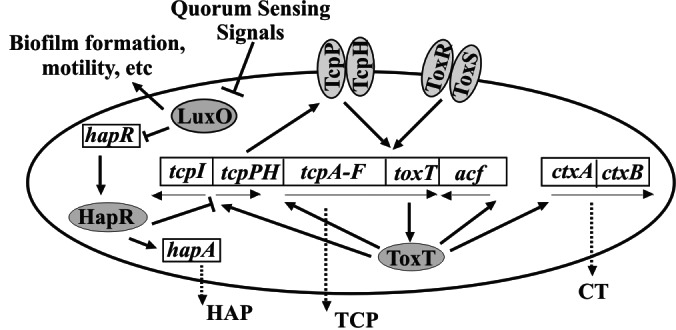Figure 7.

A model for quorum-sensing regulation of V. cholerae virulence. Solid arrows denote positive effects while solid T bars denote negative effects. At low cell density, LuxO is active and represses the expression of hapR. HapR is a negative regulator of tcpP transcription, so under this condition, the TcpP signaling protein is present and it, together with TcpH and ToxRS, activates the expression of virulence factors TCP and CT. In contrast, at high cell density, LuxO is inactive as a result of autoinducer signal accumulation. Inactivation of LuxO results in hapR expression at high cell density. HapR represses TcpP and the ToxR regulon and activates Hap protease expression.
